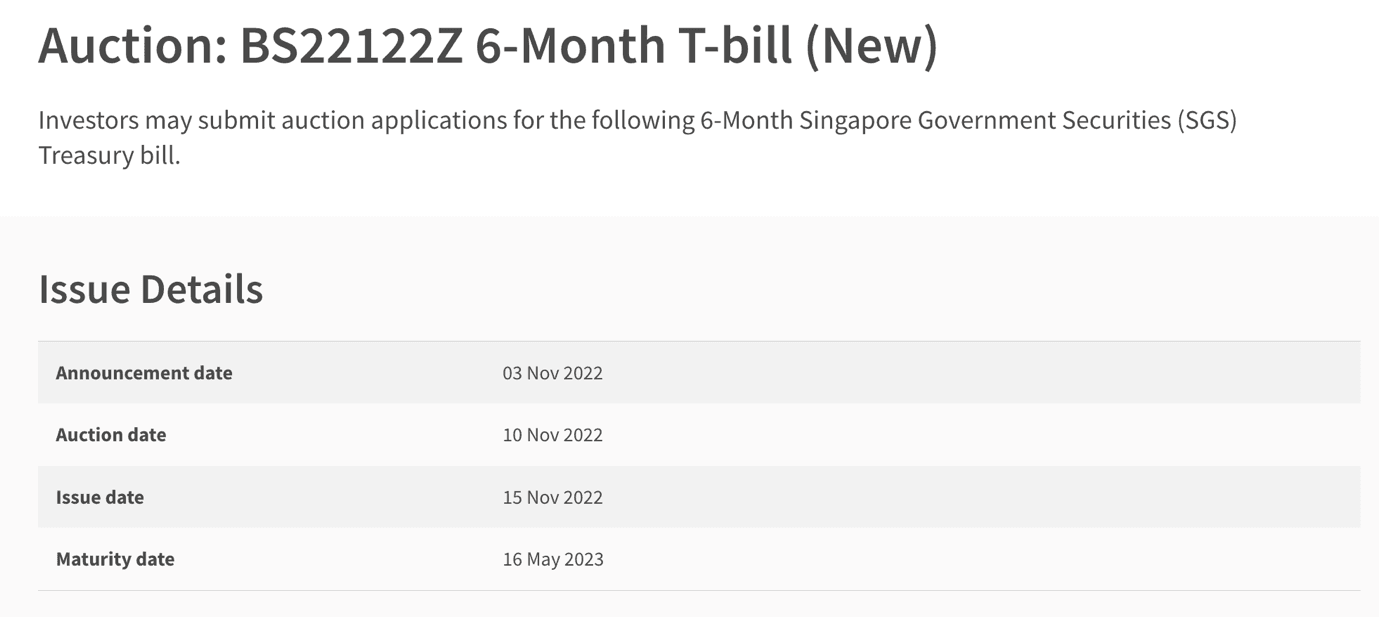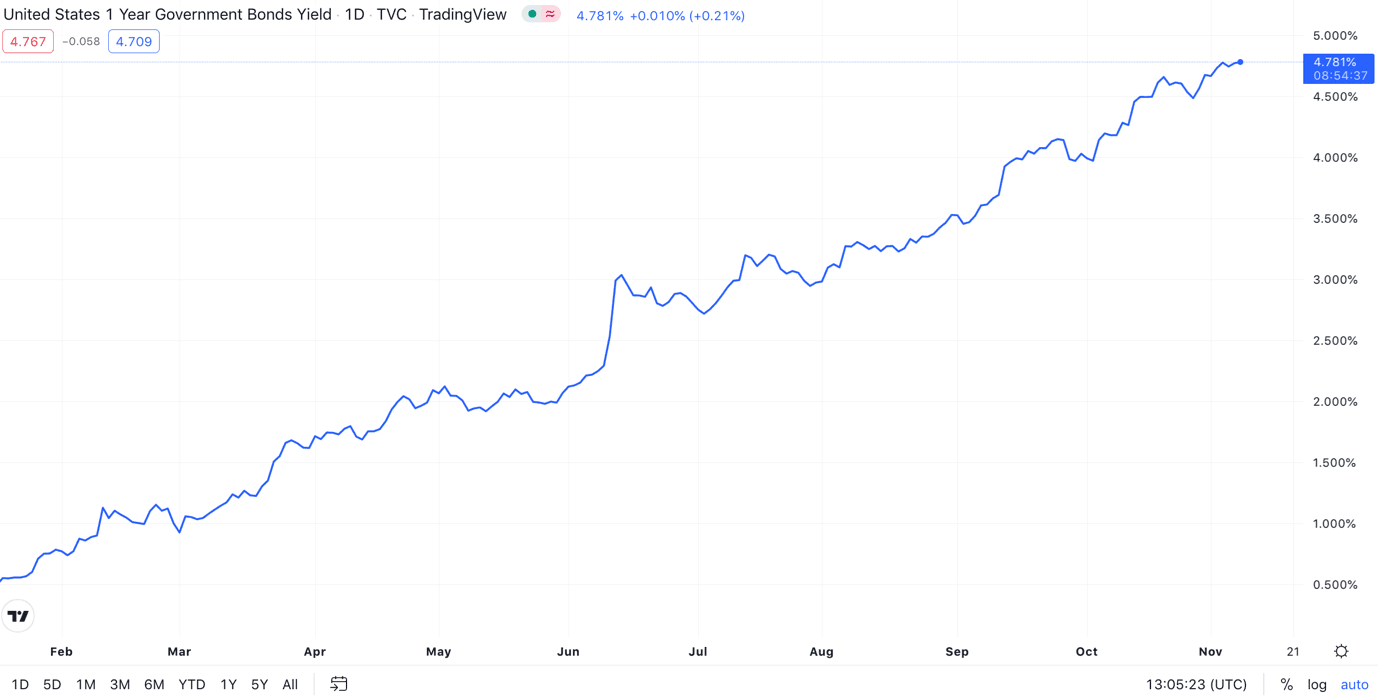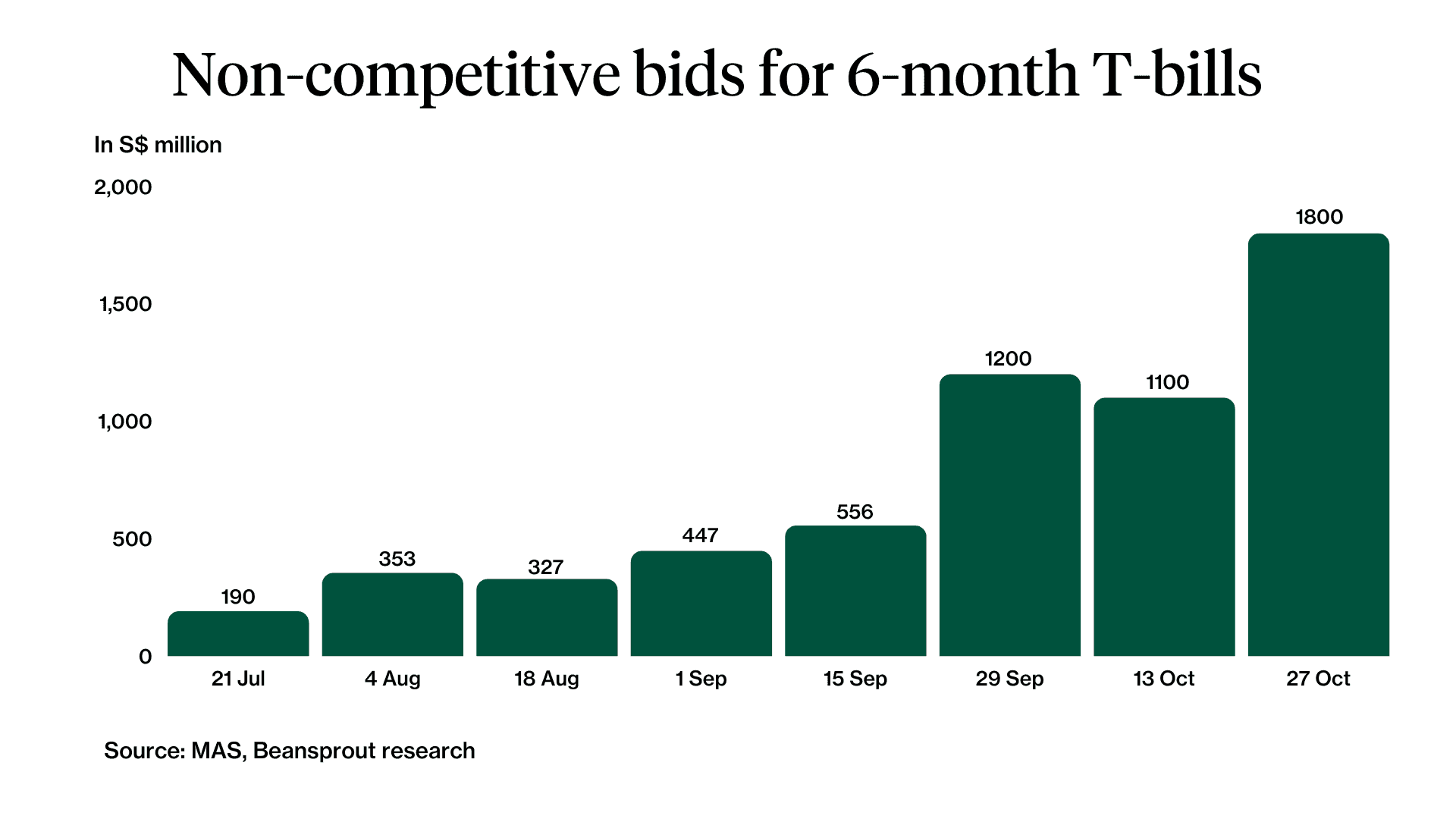Will the yield on the 6-month T-bill rise above 4.19% p.a. in the upcoming auction on 10 Nov?
By Beansprout • 08 Nov 2022 • 0 min read
As interest rates increase, the yield on the 6-month bond yield could rise above 4.19% in the upcoming auction. However, there might be an allotment cap to non-competitive bids with soaring demand.

In this article
What happened?
We’ve been getting many questions from the Beansprout community on what the yield for the upcoming 6-month T-bill auction on 10 November (BS22122Z) will be.
Interest on the T-bill has soared after the cut-off yield on the 6-month T-bill reached 4.19% in the last auction on 27 October.
However, one of the drawbacks of the T-bill is that we will not know the interest rate at the point of application.
This has deterred many investors from applying for the T-bills, as they’d prefer the certainty of knowing the interest rates that comes with investing in Singapore Savings Bond or putting money into fixed deposit.
Hence, we will take a look at a few datapoints to see if we can pick up some indication.

Will the yield on the 6-month T-bill rise above 4.19% p.a.?
#1 – Global bond yields continue to rise
The US Federal Reserve recently raised its benchmark interest rates by 0.75 percentage point (0.75%).
At the same time, the Fed had indicated that interest rates might peak at a higher level than previously expected.
This has caused a further increase in bond yields in recent weeks.
For example, the US government 1-year bond yield has climbed to 4.78% as of 8 November from 4.49% as of 27 October.

#2 – 6-month T-bill now trading at a yield of close to 4%
We can also look at the current yield of 6-month T-bills in the market.
Based on data from the MAS, the yield on the 6-month T-bill BS22121F maturating on 2 May 2023 is 3.98% as of 8 November 2022.
This is about 0.32 percentage points (0.32%) higher than where it was on 21 October.
One thing we’ve noticed is that the cut-off yield on the T-bill auctions is typically higher than the market yield at the time of the auction.
For example, in the auction on 13 October, the cut-off yield on the 6-month T-bill was at 3.77%. This was higher than the closing yield on 12 October of 3.33%, and closing yield on 13 October of 3.59%.
If this trend were to continue, then the cut-off yield of the upcoming T-bill auction could be above the closing yield of 3.98% on 8 November.

#3 – Recent auction for MAS 3-month note was at 4.6% p.a. cut-off yield
The other thing we can check is the latest auction results on the MAS 3-month note.
In case you’ve not heard of the 3-month note, that’s because it is not available to retail investors. Only institutional investors can participate in the auction on the 3-month note currently.
The latest cut-off yield on the MAS 3-month note was at 4.6% p.a., rising further from 4.25% on 18 October.

What would Beansprout do?
By looking at the various data above, there’s some evidence to suggest that bond yields have gone up further from where they were 2 weeks ago when the cut-off yield reached 4.19%.
However, there is no certainty on the interest rates prior to the auction, as the eventual cut-off yield will still depend on the demand and supply of T-bills in each auction.
For many of Beansprout’s regular readers who are used to putting in non-competitive bids, we’d like to offer a reminder again that if the amount of non-competitive bids exceeds 40%, the bond will be allocated on a pro-rated basis.
What this means is that based on the issuance size of S$4.5 billion, non-competitive bids will be allotted first up to S$1.8 billion of T-bill, based on 40% of total issuance amount.
The amount of non-competitive bids already hit S$1.8 billion in the last auction on 27 October, and there might be more investor demand after the interest rate exceeded 4% in the last auction.

If being able to get a full allocation is important to you, one of the ways to overcome the allotment limit for non-competitive bids is to put a competitive bid.
When you submit a competitive bid, you will invest in the bond only if it yields above a certain level. You can indicate the yield you are willing to accept in percentage terms, up to 2 decimal places.
However, do note that if your competitive bid is similar or higher than the cut-off yield, you may still not get the full amount that you applied for.
Pro Tip: A lower yield represents a more competitive bid, as you are indicating that you will accept a lower interest rate. You can submit multiple competitive bids.
You can find out more about competitive vs non-competitive bids in our T-bill FAQ.
If you still do not like the uncertainty of not knowing the interest rate on the T-bill auction in advance, one potential strategy is to build a T-bill ladder to reduce your exposure fluctuating interest rates.
You can also ask us your burning question on T-bills in our Telegram group.
Get latest bond-related news and insights with Bondsupermart.
This article was first published on 08 November 2022 .
Read also
Gain financial insights in minutes
Subscribe to our free weekly newsletter for more insights to grow your wealth
0 comments